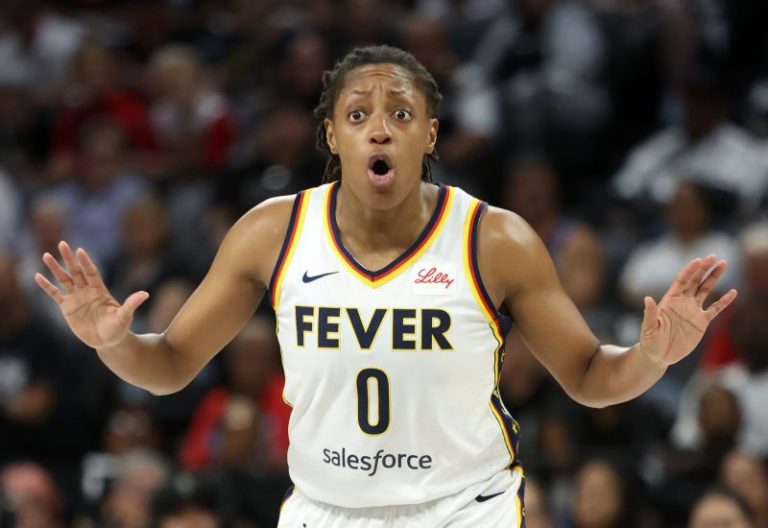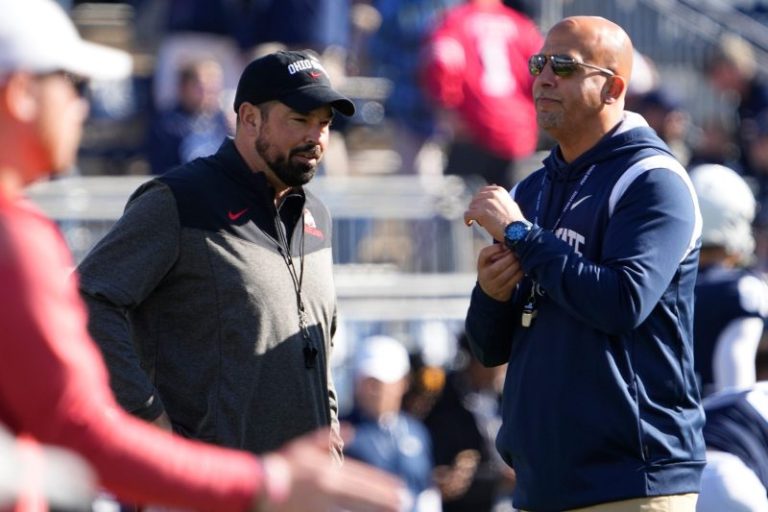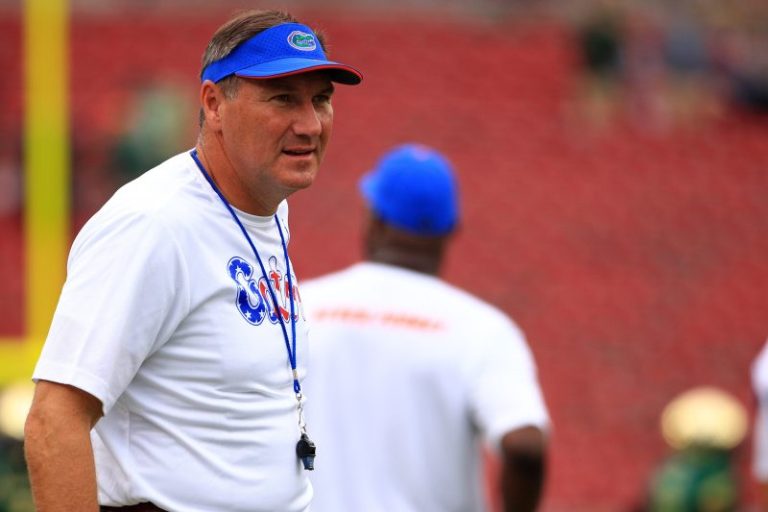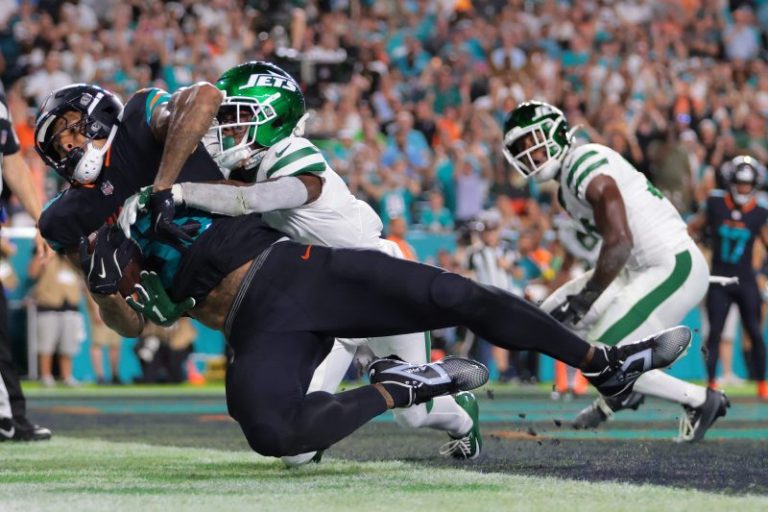Four weeks of the NFL season are already in the books. Injuries have affected the outlook for some teams across the league, others are outperforming what many expected in 2025 and a few fanbases are already looking forward to next offseason.
The biggest event of the offseason is the 2026 NFL Draft. This upcoming class is more in line with the 2024 class than what we saw in 2025. Offense is once again the strength, and we could see more players selected in the first round come April.
Within that, the strengths of this class are at quarterback and offensive line, especially tackle. A third of the first round could be devoted to those two positions alone. Similar to 2025, there are some standouts at edge and defensive tackle, indicating this is a strong class for teams seeking help in the trenches overall.
One of the biggest surprises in college football this season is Texas quarterback Arch Manning’s regression. He entered the season widely expected to be the No. 1 overall pick thanks to his traits, tape and name.
That’s no longer the case in our first mock draft of the season. Here’s how the first round looks with the order from Tankathon:
2026 NFL mock draft
1. New Orleans Saints: QB Garrett Nussmeier, LSU
Yes, the Saints draft a third quarterback in as many years at the top of this draft. There’s plenty of time in the season for 2025 pick Tyler Shough to come in and prove us wrong but we opt for another QB.
Nussmeier extends plays in the pocket with an NFL-caliber arm. He’s already showing improvement during the 2025 season as he fully recovers from a torso injury sustained during the offseason. Plus, his father Doug is the Saints’ offensive coordinator.
2. New York Jets: QB LaNorris Sellers, South Carolina
New York’s offensive line is bookended by young tackles so they already have players in place to protect Sellers. The South Carolina quarterback possesses elite physical tools, packed into a 6-foot-3, 240-pound frame.
A former soccer player, Sellers has the speed in the open field to make players miss. However, he needs to improve his decision-making as a passer to avoid costly mistakes that have emerged early in 2025.
3. Tennessee Titans: OT Spencer Fano, Utah
Through four games, Cam Ward’s taken 17 sacks – the most in the NFL. His 35.6% completion percentage when pressured is the worst in the NFL, per Pro Football Focus (PFF) data.
This is a very good offensive tackle class but Fano looks to be the top guy at the position. The 6-foot-6 tackle has an ideal mix of quickness and power to handle different types of rushers. He’s played on both the right and left side in college and could fit in on either side in Tennessee.
4. Cleveland Browns: QB Fernando Mendoza, Indiana
Cleveland uses their first of two draft picks in the first round to upgrade its quarterback position. Joe Flacco turns 41 in January and can’t be the answer long-term.
This is assuming Shedeur Sanders isn’t, either. Like Shough, there’s still time for us to be proven wrong on that front. We’ll take what we’ve seen so far to assume he isn’t. Mendoza has an NFL arm, good athleticism and a surprisingly quick release despite his size (6-foot-5, 225 pounds).
He’s shown in 2025 an ability to adapt to more quick-game or run-pass option (RPO) game plans as well as downfield passing concepts. He’d be a moldable quarterback for Kevin Stefanski to maximize.
5. Miami Dolphins: EDGE Rueben Bain Jr., Miami
Miami gets the top edge rusher in the class in Bain, thanks to the quarterback-needy teams in front of them. Bain entered 2025 in high regard thanks to his power packed in a 6-foot-3, 275-pound frame. That size means he can kick inside for a creative defensive coordinator like Anthony Weaver.
The Dolphins have other needs on both sides of the ball but this pick maximizes value at a foundational position. Cornerback and offensive line were also under consideration.
6. Baltimore Ravens: DT Peter Woods, Clemson
Baltimore’s been the third-worst run defense by expected points added (EPA) per play, per SumerSports, through four weeks. Woods could be the answer immediately.
Clemson may be underperforming as a whole in 2025 but Woods still warrants a top-10 pick. At 6-foot-3 and 315 pounds, he combines elite power with rare explosiveness. He can line up at multiple spots on the interior and play at a Pro Bowl-caliber level sooner than later.
7. Las Vegas Raiders: QB John Mateer, Oklahoma
With young talent at tight end, running back and wide receiver but an aging (and regressing) Geno Smith at quarterback, Las Vegas pulls the trigger on a young passer.
Mateer’s currently sidelined with a broken bone in his throwing hand but if he recovers well, he should be in consideration for a top-10 pick. He’s a creative runner who can extend plays as a dual-threat quarterback and create explosives. His performance against Michigan showed he can handle the tougher defenses in college football.
8. Carolina Panthers: EDGE T.J. Parker, Clemson
Carolina hits the edge rusher position again in the 2026 NFL Draft by taking Woods’ running mate at Clemson in Parker. The 6-foot-3, 265-pound edge rusher uses his heavy hands to disrupt plays in both phases. He set a school record for forced fumbles in 2024 with six and tackles for loss by a freshman in 2023 with 12.5.
He’s racked up a pair of sacks already in 2025. His power and explosiveness would give Carolina another potential difference-maker on the defensive line alongside Derrick Brown.
9. New York Giants: OT Kadyn Proctor, Alabama
Jaxson Dart may be the long-term answer at quarterback. If so, New York needs to bolster the protection in front of him. Proctor is a physical marvel at 6-foot-7 and 369 pounds with some of the quickest feet in the class. He absolutely stonewalled Georgia defenders with zero pressures, hurries or quarterback hits allowed on 43 pass blocking snaps.
Lazy analysts may compare Proctor to former Giants first-round offensive lineman Evan Neal, as they both attended Alabama. But this is simply a different type of prospect who is multiple tiers better.
10. Houston Texans: OT Francois Mauigoa, Miami
Houston’s offensive line continues to create issues for the Texans’ offense. Rookie Aireontae Ersey’s learning on the job at left tackle and Mauigoa fits in on the right side to bookend the Texans’ offensive line with young pieces.
At 6-foot-6 and 315 pounds, Mauigoa has the size and tools to be a franchise tackle for years. His foot speed and power project well to the NFL level.
11. Dallas Cowboys: WR Jordyn Tyson, Arizona State
Dallas’ offense is enjoying life with a reliable No. 2 wideout behind CeeDee Lamb in George Pickens. But Pickens will be a free agent this upcoming offseason.
Tyson’s a potential ready-made option to replace him. He’s not a burner but Tyson has ideal size for an outside receiver with impressive separation ability. His quickness and footwork make him a problem for defenders.
12. New England Patriots: S Caleb Downs, Ohio State
Downs is arguably the best player in the draft class regardless of position. Unfortunately, he plays one of the least valuable positions in the class.
An NFL defensive coordinator will have a fantastic time finding ways to deploy Downs in the box, at the slot position and at deep safety. He can do it all and could complement former first-round pick Christian Gonzalez in the Patriots’ secondary.
13. Denver Broncos: EDGE LT Overton, Alabama
Denver demonstrated in the 2025 NFL Draft that it’s not afraid to double down on a strength with its premium draft capital. They do it again by taking Overton at No. 13 here.
His larger frame and ability to bend at 6-foot-3 and 275 pounds mean he can line up inside or at the edge. John Franklin-Myers will be a free agent in 2026 and Overton could help fill his shoes.
14. Los Angeles Rams (via Atlanta Falcons): QB Arch Manning, Texas
Okay, here we go. Manning has looked rough through the first month of the college football season. His feet are unsettled and that’s causing issues with his accuracy and decision-making.
But we’ve all seen the flashes. What he showed in spot starts during the 2024 season made him a lock for the No. 1 pick in 2026 if he chose to declare. Los Angeles uses its extra first-round pick from Atlanta to draft him and sit him behind Matthew Stafford for a year before he develops into a potential long-term starter.
15. Chicago Bears: OT Caleb Lomu, Utah
Braxton Jones will be a free agent next offseason, and Lomu is in his second season as the starting left tackle for the Utes. The 6-foot-6, 308-pound tackle gives Chicago an option there or he can kick inside to be a guard if 2025 second-round pick Ozzy Trapilo solidifies himself at the position.
16. Washington Commanders: EDGE Keldric Faulk, Auburn
Faulk somehow falls this far and Washington takes him as a building block for the future on defense. Faulk’s game is reminiscent of Calais Campbell; at 6-foot-6 and nearly 290 pounds, he has the length and power to line up on the inside or at edge for a Commanders team needing talent up front.
Wide receiver was in consideration here but Faulk’s value at No. 16 was too good to ignore.
17. Arizona Cardinals: WR Nyck Harbor, South Carolina
Arizona went all defense in its 2025 draft class and swing the other way to start 2026. ‘Elite’ isn’t an apt enough description for Harbor’s athleticism; at 6-foot-5 and 235 pounds, Harbor boasts a low 4.2-second speed.
The Cardinals could use a field-stretching piece on the outside to unlock Marvin Harrison Jr. You won’t find a better athlete at the position in this class.
18. Minnesota Vikings: CB Jermod McCoy, Tennessee
The Vikings’ defense is relying on veteran players in the secondary once again this year. McCoy could provide a long-term answer in a division with plenty of talented wide receivers.
His processing speed is special and ball production projects well to the NFL. He won’t keep up in the NFL on athleticism alone. Instead, his instincts will make him a starter. He is recovering from an ACL injury this offseason; how he looks when healthy could make a difference of a whole round.
19. Cincinnati Bengals: EDGE Matayo Uiagalelei, Oregon
Cincinnati went with one of the most athletic edge rushers in the class last draft with Shemar Stewart. They balance that with Uiagalelei, a high-floor rusher with lots of production against top competition.
He’s notched four sacks on 100 pass rush snaps so far in 2025. His first step is what NFL evaluators want to see and his bend is an asset off the edge. He’ll need to improve against double-teams.
20. Kansas City Chiefs: TE Kenyon Sadiq, Oregon
Sadiq is exactly the kind of matchup nightmare NFL teams look for in tight ends. At 6-foot-3 and 245 pounds, Sadiq is a more than capable blocker with elite speed for his size.
Kansas City needs more athletic difference-makers on offense. Sadiq could be the heir to Travis Kelce as a versatile, dynamic threat inline or outside.
21. Dallas Cowboys (via Green Bay Packers): RB Jeremiyah Love, Notre Dame
Dallas continues to bolster the offense with its extra first-round pick. The Cowboys’ running game has taken a step forward with Brian Schottenheimer and Klayton Adams in 2025. Love would give them a dynamic threat to maximize it.
He’s a true three-down running back with burst to make plays in the running or passing game. A year after the Cowboys missed out on Ashton Jeanty, they get the top running back in the class this time around.
22. Cleveland Browns (via Jacksonville Jaguars): OT Xavier Chaplin, Auburn
Cleveland has plenty of needs on offense but one of the more subtle ones is up front. Both starting guards are pending free agents, the Browns just traded for Cam Robinson to help out at left tackle and right tackle Jack Conklin is dealing with injuries once again.
Chaplin is a raw prospect but the tools he has at 6-foot-7 and 348 pounds are remarkable. Cleveland went with a potential quarterback of the future in the top four and get a developmental piece to protect him here.
23. Seattle Seahawks: OL Gennings Dunker, Iowa
The Seahawks hit interior offensive line in Round 1 once again. Dunker started at right tackle at Iowa but likely projects best at guard where his lateral limitations will be less of an issue.
His power and finishing ability in the run game are fantastic. He’s a mauler who can help the Seahawks’ rushing attack get a step better under Klint Kubiak.
24. Los Angeles Rams: CB Avieon Terrell, Clemson
Terrell is on the smaller side for an NFL cornerback at 5-foot-11 and 180 pounds but he more than makes up for it with his impressive athleticism and ball skills.
The younger brother of Falcons cornerback A.J. Terrell, the Clemson standout offers the full package at the position. In 2024, he notched a sack, two interceptions, 10 pass breakups and three forced fumbles.
25. Tampa Bay Buccaneers: EDGE David Bailey, Texas Tech
Tampa Bay’s investments in the secondary are already paying off from the 2025 draft. In 2026, they lead with addressing the defensive line.
Bailey made the move from Stanford to Texas Tech and continued his pace. He faced NFL-caliber talent against Utah in Week 4 and still had three hurries and a sack on 37 pass rush snaps. He could be a piece up front to complement the young secondary.
26. Indianapolis Colts: CB Mansoor Delane, LSU
Indianapolis’ defense was exposed in Week 4 at the cornerback spots opposite Charvarius Ward. The veteran Ward turns 30 next offseason, often when the cliff comes.
Delane’s been one of the best coverage cornerbacks in college football this season. He’s allowed just six receptions on 20 targets through five games for the Tigers. He’s a bit slight at 6-foot-1 and 187 pounds and not the best athlete but his fluid athleticism and impressive instincts keep him in the right spot.
27. Pittsburgh Steelers: QB Drew Allar, Penn State
Aaron Rodgers will be 42 by Christmas and can’t be the long-term answer at quarterback. Will Howard may be but Allar provides a much higher ceiling.
The 6-foot-5, 235-pound Allar has improved in each of his years as a starter. His arm strength and mobility has drawn comparisons to Josh Allen as a prospect. Allar’s trajectory may not reach Allen’s heights but he has a higher ceiling than most passers in this class.
28. Detroit Lions: C Connor Lew, Auburn
Detroit’s offensive line has long been a strength for the team and Lew presents a way to ensure that into the future.
The Auburn product is one of the more athletic offensive linemen in the class, boasting an ideal skillset for pass protection. His wrestling background is quickly apparent on tape. He’ll likely need to bulk up to handle NFL size but Detroit is a great environment for him to grow.
29. Los Angeles Chargers: DT Caleb Banks, Florida
The Chargers’ defense has been one of the best against the pass in the NFL in 2025. Against the run, however, things have been tougher as the Chargers rank 20th in EPA per rush allowed league-wide.
Enter Banks, one of the biggest defenders in the class at 6-foot-6 and 330 pounds. He possesses more than enough traits to become an elite player on the interior, especially with his first step, but needs development. He can line up at multiple positions on the defensive line and give the Chargers a building block up front.
29. San Francisco 49ers: OT Isaiah World, Oregon
Age may finally be catching up to future Hall of Fame left tackle Trent Williams. The 49ers’ blindside protector has 12 pressures allowed through four games. His last full season – 2023 – had just 17 allowed through 15 games.
San Francisco needs to invest in the offensive line. World transferred to Oregon ahead of 2025 with a penchant for good pass blocking. What he’s shown already in Eugene is an improvement in the running game. The 6-foot-8, 312-pound World combines good instincts with a high ceiling thanks to his lateral movement abilities.
31. Buffalo Bills: LB Sonny Styles, Ohio State
Buffalo invested in the secondary and defensive line in the 2025 draft. They get reinforcements in between those groups in Styles.
Styles has outlier size (6-foot-4, 238 pounds) and athleticism to make him a difference-maker at the second level for an NFL defense. His background as a safety means he can handle multiple assignments. He’s a noted leader in the locker room as well.
32. Philadelphia Eagles: S Dillon Thieneman, Oregon
It’s hard to poke holes in the Eagles’ roster but one spot you could do so is the secondary, specifically at safety. Reed Blankenship has allowed a 121.8 passer rating when targeted, according to PFF.
Thieneman is as sure a tackler as you’ll find in this safety class. His elite athleticism and instincts consistently put him in the right place. Oregon is experimenting with more diverse safety usage in 2025, which only sets Thieneman up more for success in the NFL.
This post appeared first on USA TODAY










